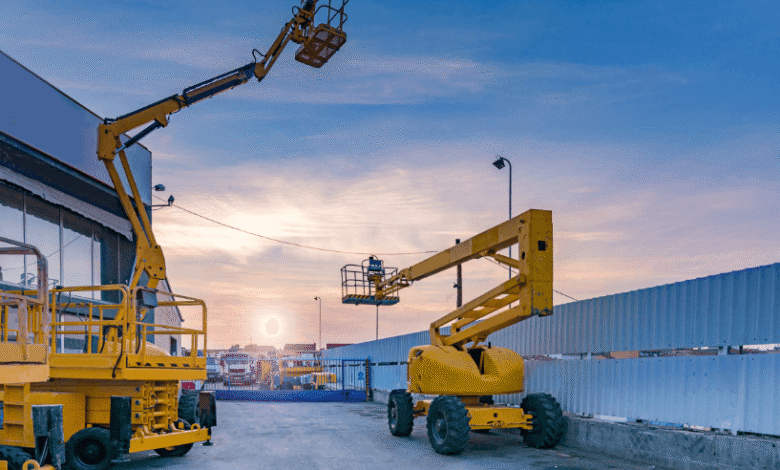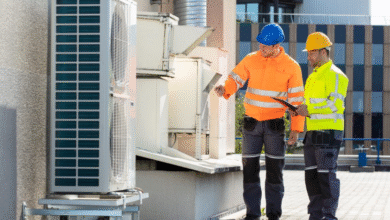Why High-Mobility Lifting Equipment is Transforming Construction

High-mobility lifting equipment boosts construction efficiency by adapting to varied terrain and tight spaces. Ideal for diverse projects, it offers flexibility and helps contractors streamline operations.
Enhanced Accessibility on Challenging Job Sites
High-mobility lifting equipment excels at reaching areas that traditional cranes cannot access. These machines navigate tight spaces between existing structures, work effectively on uneven terrain, and adapt to confined construction sites where larger equipment would be impractical.
The compact design of mobile lifting equipment allows operators to position loads precisely in areas with overhead obstacles or limited clearance. This capability is particularly valuable in urban construction projects, where space constraints and existing infrastructure create complex access challenges.
Terrain Adaptability
Mobile lifting equipment handles various ground conditions effectively. Whether working on soft soil, rocky surfaces, or sloped terrain, these machines maintain stability and operational efficiency. Their tracked or wheeled systems distribute weight evenly, reducing ground pressure and minimizing site damage.
This terrain flexibility eliminates the need for extensive site preparation that stationary equipment often requires. Construction teams save time and resources by deploying equipment that works with existing site conditions rather than modifying the environment to accommodate machinery.
Increased Efficiency Drives Faster Project Completion
Mobile lifting equipment significantly reduces setup and relocation time compared to traditional alternatives. Operators can quickly reposition equipment as project needs evolve, maintaining continuous workflow without lengthy interruptions.
The ability to move between work areas efficiently means fewer delays and better resource utilization. Construction teams complete lifting tasks faster when equipment can adapt to changing requirements without extensive reconfiguration or repositioning procedures.
Streamlined Operations
Quick deployment capabilities allow construction teams to respond rapidly to schedule changes or urgent lifting requirements. Mobile equipment reduces the coordination complexity associated with stationary crane operations, where positioning decisions significantly impact project timelines.
These efficiency gains compound throughout project duration. Faster lifting operations create schedule buffer time that helps projects stay on track despite unforeseen challenges or weather-related delays.
Substantial Cost Savings Through Operational Flexibility
High-mobility lifting equipment delivers cost savings through multiple channels. Reduced setup time translates directly to lower labor costs, while equipment versatility eliminates the need for multiple specialized machines on single projects.
Transportation costs decrease when mobile equipment can handle diverse lifting requirements without frequent equipment changes. Projects requiring various lifting capacities and configurations benefit from equipment that adapts to different specifications without replacement.
See also: Understanding The Importance Of Life Insurance In Financial Planning
Minimized Site Preparation
Traditional lifting equipment often requires extensive ground preparation, including foundation work, access road construction, and site leveling. Mobile equipment works effectively on unprepared surfaces, eliminating these preparation costs.
The reduced ground pressure of mobile lifting equipment also minimizes post-project site restoration requirements. This consideration is particularly important on projects where site appearance must be maintained or restored to original conditions.
Safety Improvements Through Advanced Design
Modern high-mobility lifting equipment incorporates advanced safety systems that protect both operators and site personnel. Enhanced visibility systems, load monitoring technology, and automated safety features reduce accident risks significantly.
The ability to position equipment optimally for each lift improves safety margins by allowing operators to maintain clear sight lines and avoid overhead hazards. Mobile equipment’s flexibility helps create safer working environments by adapting to site conditions rather than forcing workers to adapt to equipment limitations.
Reduced Personnel Exposure
Mobile lifting equipment often requires fewer personnel for operation and support compared to larger stationary systems. This reduction in workforce exposure to lifting operations inherently improves overall site safety statistics.
Remote control capabilities available on many mobile lifting systems further enhance safety by allowing operators to maintain safe distances from lifting operations while maintaining precise control over equipment functions.
Environmental Benefits Support Sustainable Construction
High-mobility lifting equipment supports environmental sustainability through reduced fuel consumption and lower emissions compared to larger alternatives. The efficient operation and quick repositioning capabilities minimize engine run time and overall fuel usage.
Site impact reduction is another significant environmental benefit. Mobile equipment causes less ground disturbance, preserving natural site conditions and reducing the need for environmental restoration after project completion. Crawler cranes like those in Utah demonstrate how specialized equipment can work effectively while minimizing environmental disruption.
Emission Reduction Strategies
Modern mobile lifting equipment often features advanced engine technology that meets stringent emission standards. These improvements contribute to cleaner construction operations and support projects pursuing environmental certification.
The versatility of mobile equipment also reduces the total number of machines required on site, decreasing overall equipment-related emissions. This consolidation effect supports sustainable construction practices while maintaining operational efficiency.
Conclusion
High-mobility lifting equipment enhances construction projects with greater flexibility, efficiency, cost savings, safety, and environmental benefits. By adopting these solutions, professionals can improve project outcomes, reduce costs, and gain a competitive edge in a demanding market.




